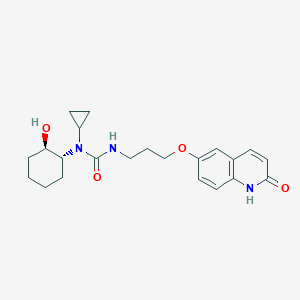| 1 |
Recurrent recessive mutation in deoxyguanosine kinase causes idiopathic noncirrhotic portal hypertension.Hepatology. 2016 Jun;63(6):1977-86. doi: 10.1002/hep.28499. Epub 2016 Mar 31.
|
| 2 |
Colonic diverticular disease. Nat Rev Dis Primers. 2020 Mar 26;6(1):20.
|
| 3 |
Optimized Management of Ulcerative Proctitis: When and How to Use Mesalazine Suppository. Digestion. 2018;97(1):59-63.
|
| 4 |
URL: http://www.guidetopharmacology.org Nucleic Acids Res. 2015 Oct 12. pii: gkv1037. The IUPHAR/BPS Guide to PHARMACOLOGY in 2016: towards curated quantitative interactions between 1300 protein targets and 6000 ligands. (Ligand id: 4655).
|
| 5 |
Efficacy of Oral, Topical, or Combined Oral and Topical 5-Aminosalicylates, in Ulcerative Colitis: Systematic Review and Network Meta-analysis. J Crohns Colitis. 2021 Jul 5;15(7):1184-1196.
|
| 6 |
ClinicalTrials.gov (NCT00783081) Safety and Efficacy of K-134 for the Treatment of Intermittent Claudication. U.S. National Institutes of Health.
|
| 7 |
How many drug targets are there Nat Rev Drug Discov. 2006 Dec;5(12):993-6.
|
| 8 |
Transport studies with 5-aminosalicylate. Eur J Clin Pharmacol. 2006 Oct;62(10):871-5.
|
| 9 |
Role of organic anion-transporting polypeptides for cellular mesalazine (5-aminosalicylic acid) uptake. Drug Metab Dispos. 2011 Jun;39(6):1097-102.
|
| 10 |
NAT1 genotypes do not predict response to mesalamine in patients with ulcerative colitis. Z Gastroenterol. 2008 Mar;46(3):259-65.
|
| 11 |
A phase II dose-ranging study of the phosphodiesterase inhibitor K-134 in patients with peripheral artery disease and claudication. J Vasc Surg. 2012 Feb;55(2):381-389.e1.
|
|
|
|
|
|
|


